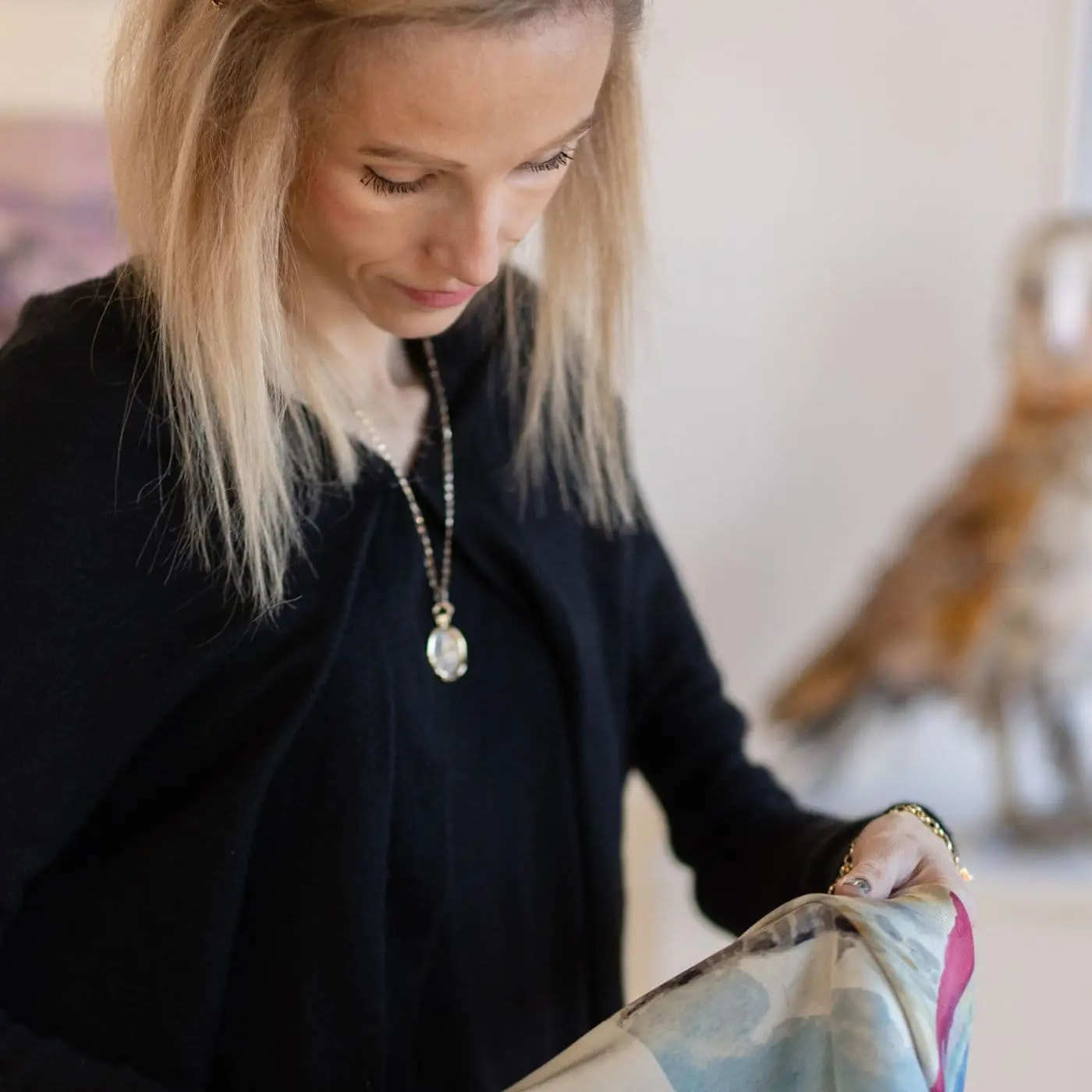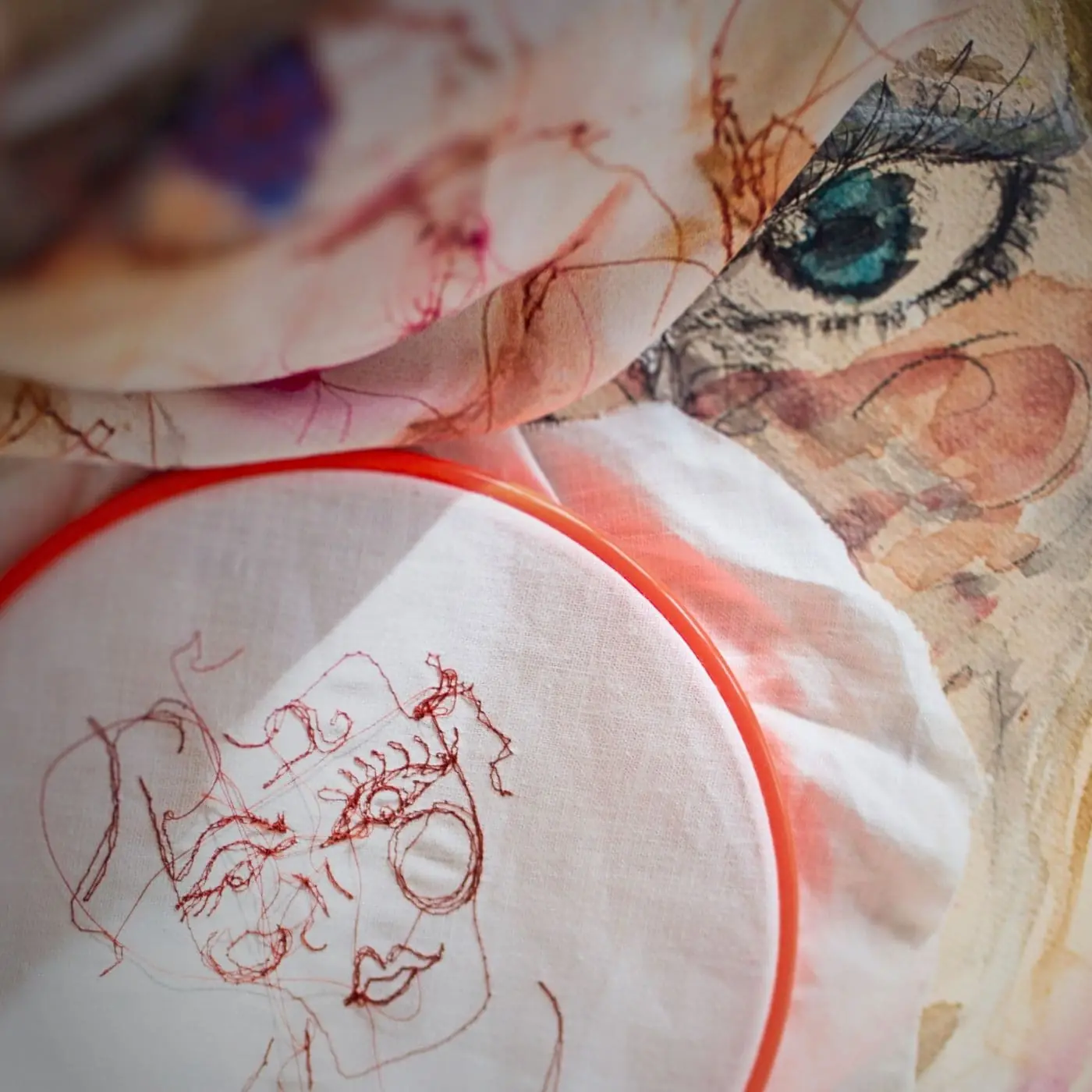Ailish Henderson is an artist storyteller. She weaves her personal journey into her creative process to explore the healing power of making.
Her art is a visual journal of her life, capturing moments, processing memory and embracing imperfection.
Ailish is influenced by the philosophy behind Kintsugi – the Japanese art of mending broken pottery with gold to highlight its history. And rather than aiming for a polished final piece, Ailish explores how the act of creation can enable transformation and ‘mending’ to take place.
Her multi-disciplinary work is deeply intimate. By using personal objects and memorabilia in her work, she ensures her portraits are not simply representations. They also offer a tangible connection to the people and stories they portray.
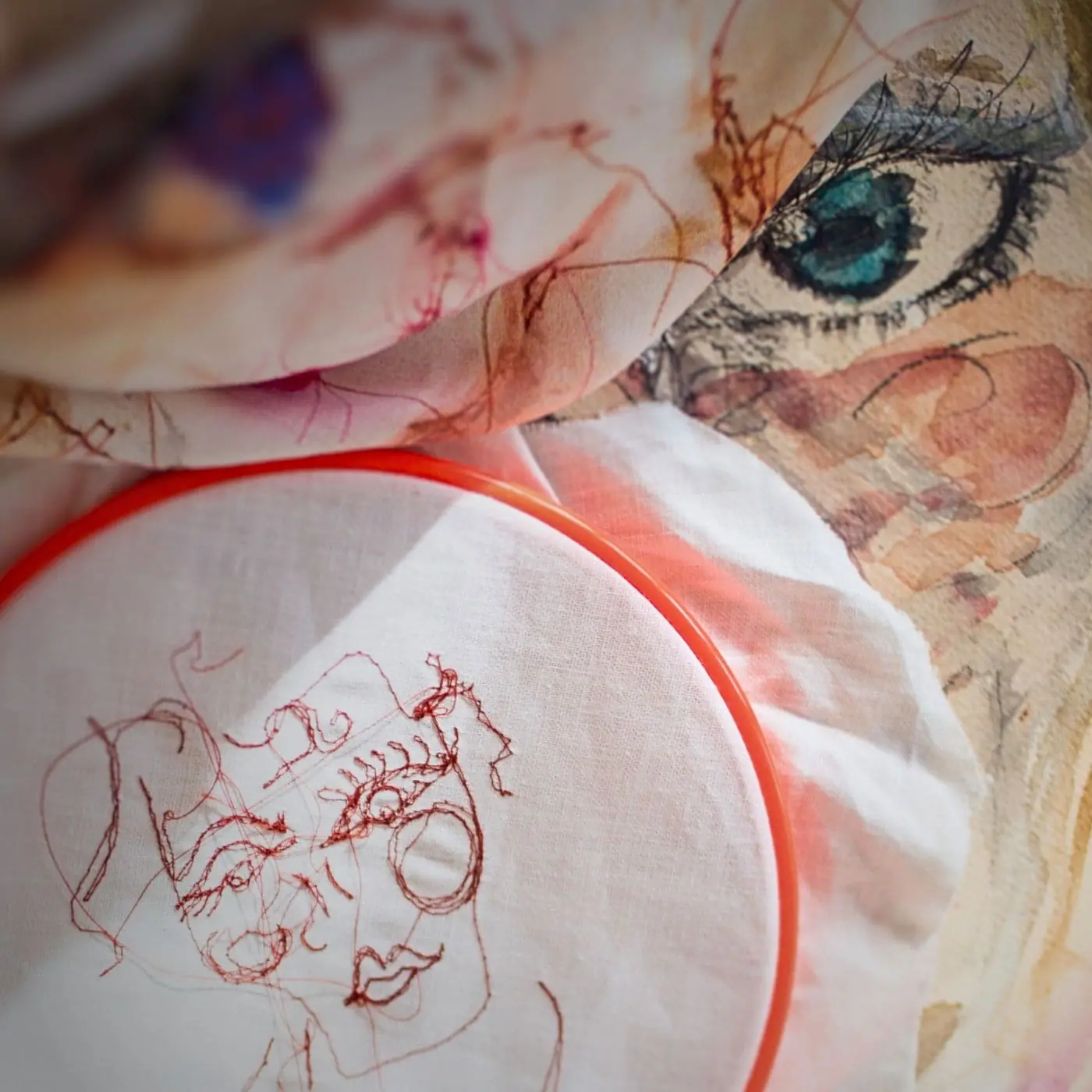

Ailish Henderson: I make sense of the world and my own experience through a juxtaposition of the written word and visual, artistic methods.
I am finally coming to terms with what ‘artistic practice’ means for me. It’s not always a finished painting or an embroidery – it’s the story of me. Art is my life rather than about a place or a setting.
“I need to have a story or an experience in order to create.”
Ailish Henderson, Art textiles practitioner
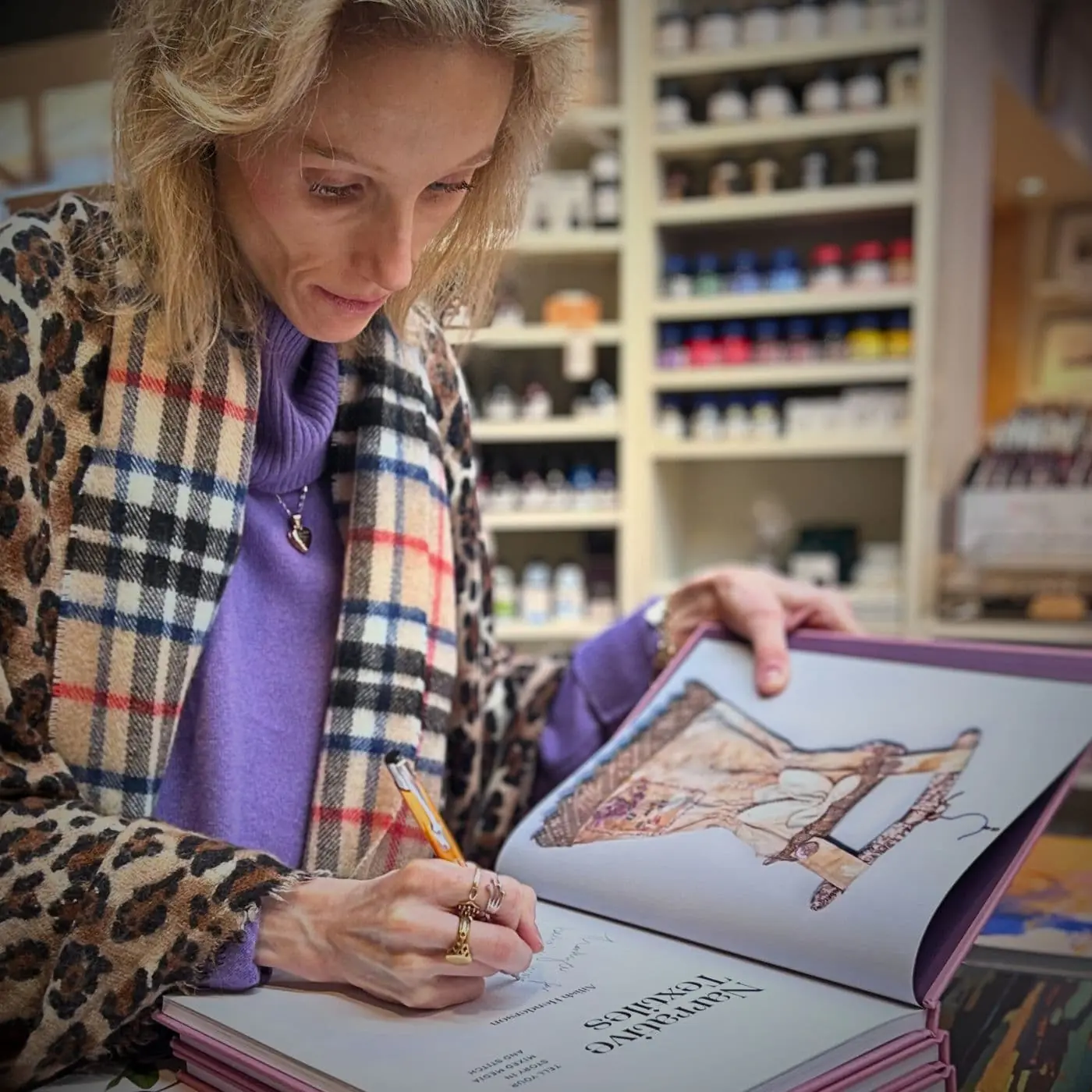

Celebrating flaws
My work is heart driven. It’s made with the Japanese art of Kintsugi in mind. Kintsugi literally means ‘golden repair’. Instead of throwing away broken pottery, a precious metal like gold or silver is used to repair and enhance the broken pieces.
Having been exposed to a pattern of traumatic events from childhood through to adulthood, I realised I needed to find a way of making sense of big questions and issues. This led to my study of the concept of ‘repair’ and investigating how we can potentially present our emotional repair in a textile conversation.
In Kintsugi, flaws are celebrated rather than trying to make a broken thing perfect. This idea has become an inspiration to me. I’m analysing what this practice can mean within the sphere of emotional repair.
I also find that it’s soothing to see something come into existence via my hands. It’s not a final repair or cure but a ‘mending’ which keeps me going.
Exploring these concepts either openly or discreetly through my teaching and writing practice is now my life’s work. This way, my audience can connect with this form of ‘mending’ too.
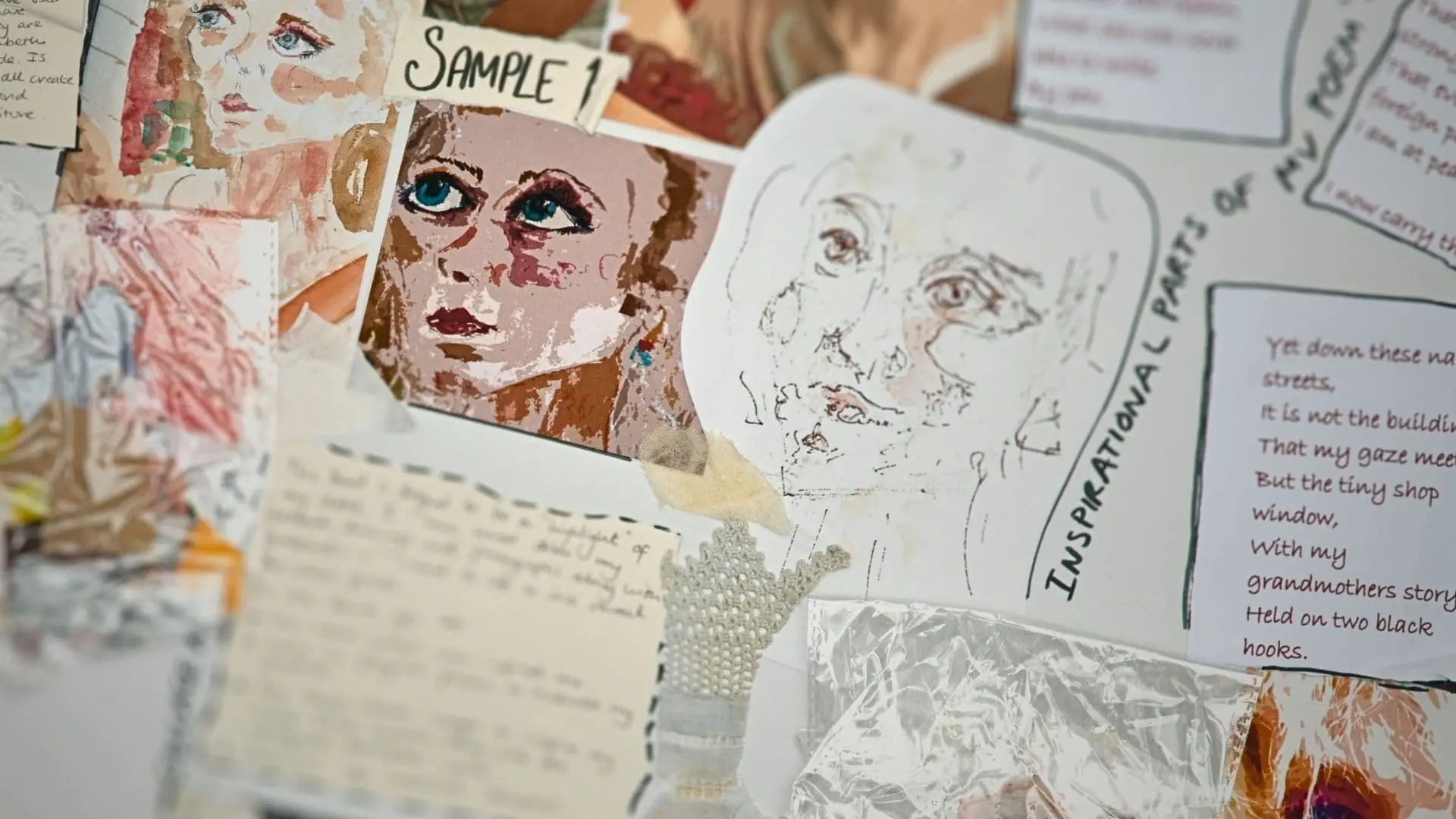

“I’m inspired by a memory, a life experience or even a scar.”
Ailish Henderson, Art textiles practitioner
Inspired by life
My art is my visual diary. I am honest in my practice – what you see is what you get. I’ve always had a reputation for wearing my heart on my sleeve. I tell my story with all of its emotion as well as the narrative line.
Unhappy occasions provide as much artistic fuel as happy ones. In fact, sometimes more so. I’ve also used written pieces of prose to inspire imagery. I draw from these sources, creating a simple vignette, which gradually forms a retold narrative using textiles.
I explore how those stories can become tactile.
The self-portrait Pistachio Smiles was inspired by a lone break in Paris. It’s stitched on a base of Irish linen (from my homeland) and created with many sentimental precious materials, such as my own clothing. The marriage of its inspiration and the hand embroidered fibres make it literally part of me.
Alternatively, I might find an old photograph that triggers ideas. It intrigues me how the viewer simply sees the image for what it is, while I hold the unique knowledge or key behind the photograph. I love using that knowledge to extend the narrative into a stitched piece.
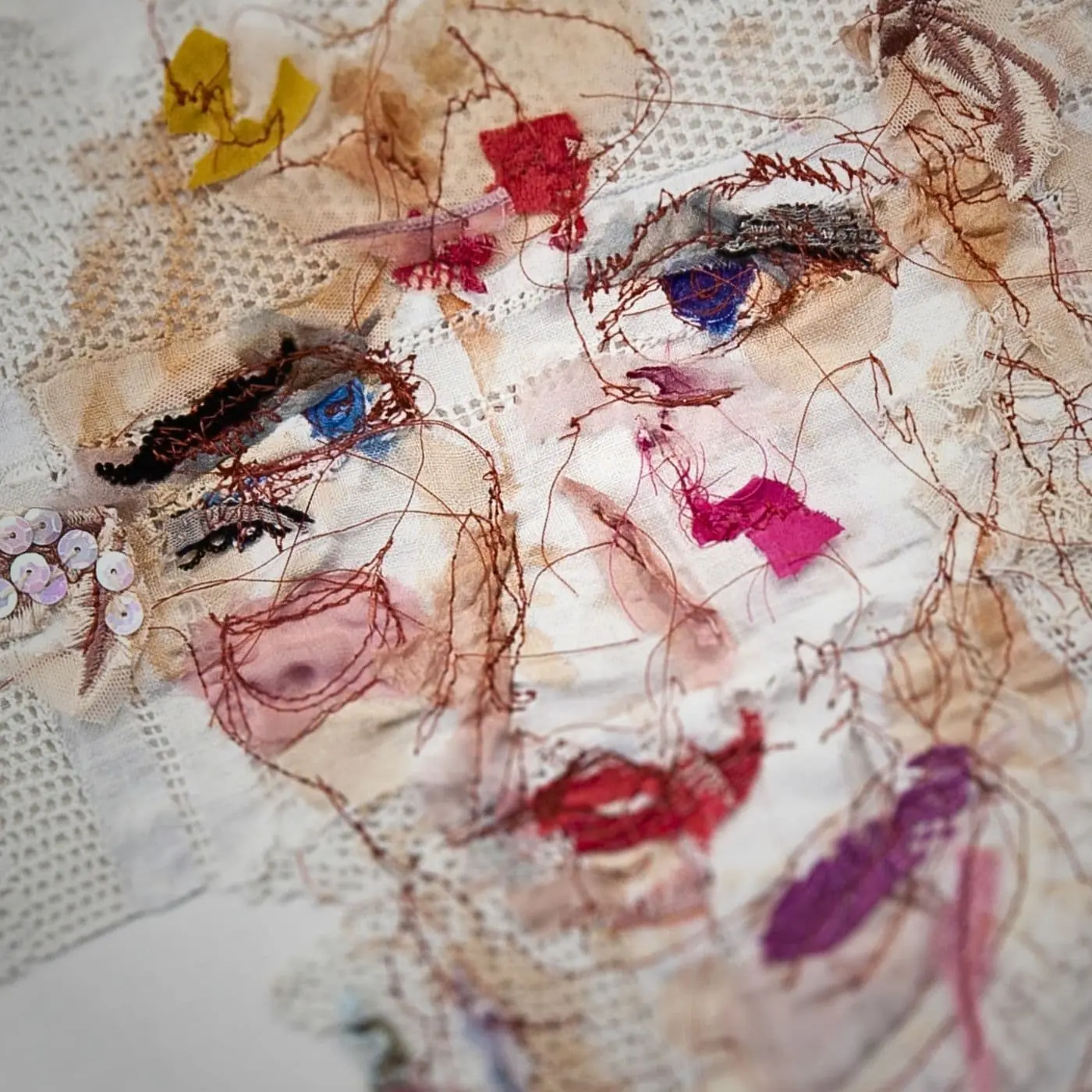

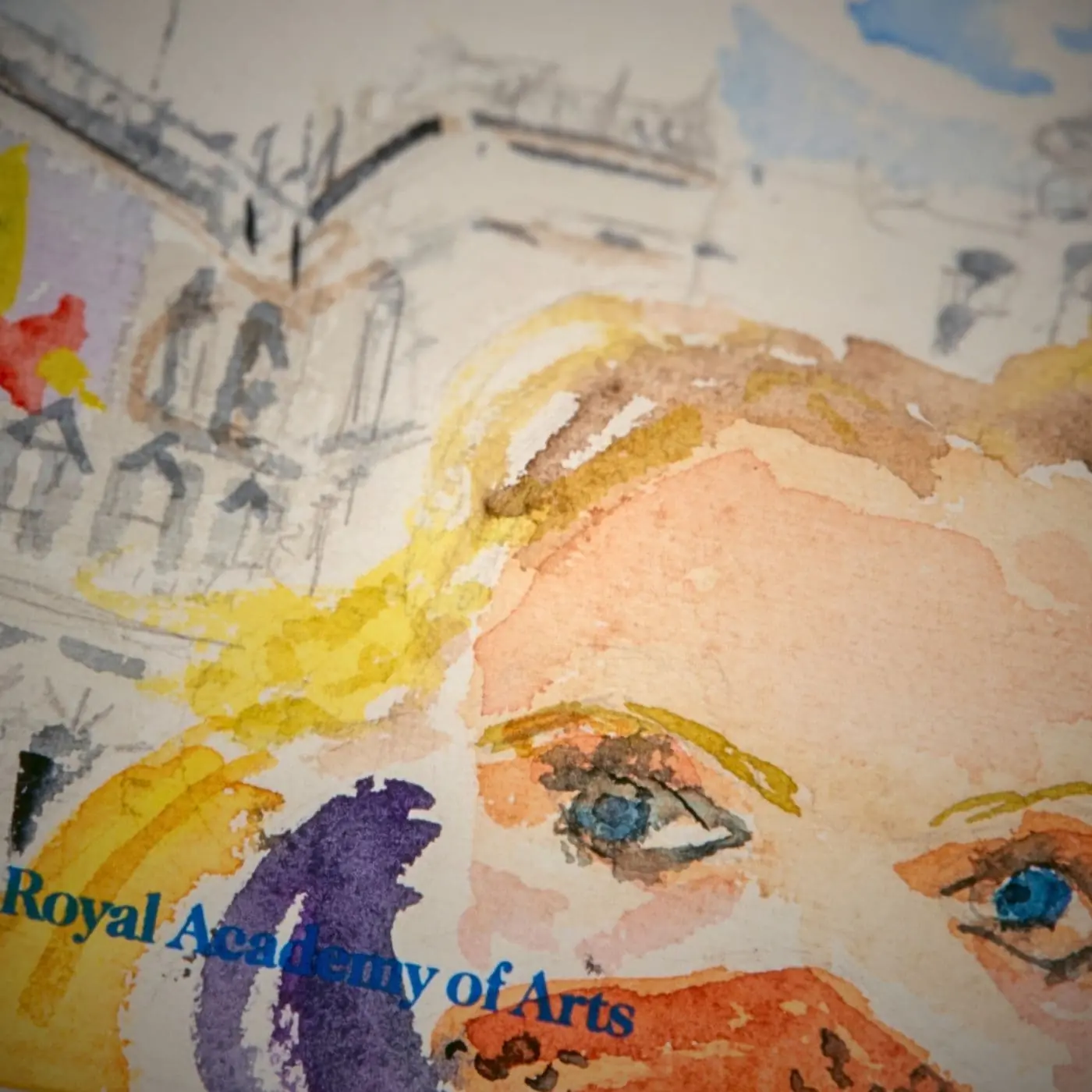

Drawing with a needle
Once I have my inspiration, my fabric becomes my canvas. The type of work I am doing influences my process, but for my self-portraits I sketch out the basics with pencil on the fabric.
I love working in a sketchbook. I like to make my own by stringing together odd leaves of paper or other memorabilia to work as paper. Each one is unique and my sketchbook might become the artwork itself.
I might paint certain areas of the self-portrait. I’ll use watercolour or gouache paints as well as fabric dye. I am not precious about the type of paints I use as my self-portraits are not designed to be machine washed.
I use a lot of drawing, collage, mixed media and paint.
I appreciate the honesty hand stitching provides. My hand work doesn’t have to be intricate, and at times, it may be primitive. Yet I’m guiding its tension and I’m in control.
Although I adore my free machine embroidery foot, hand embroidery will always be my first love and I don’t do much machine stitch.
“My needle is my pen, whether I am stitching by hand or machine.”
Ailish Henderson, Art textiles practitioner
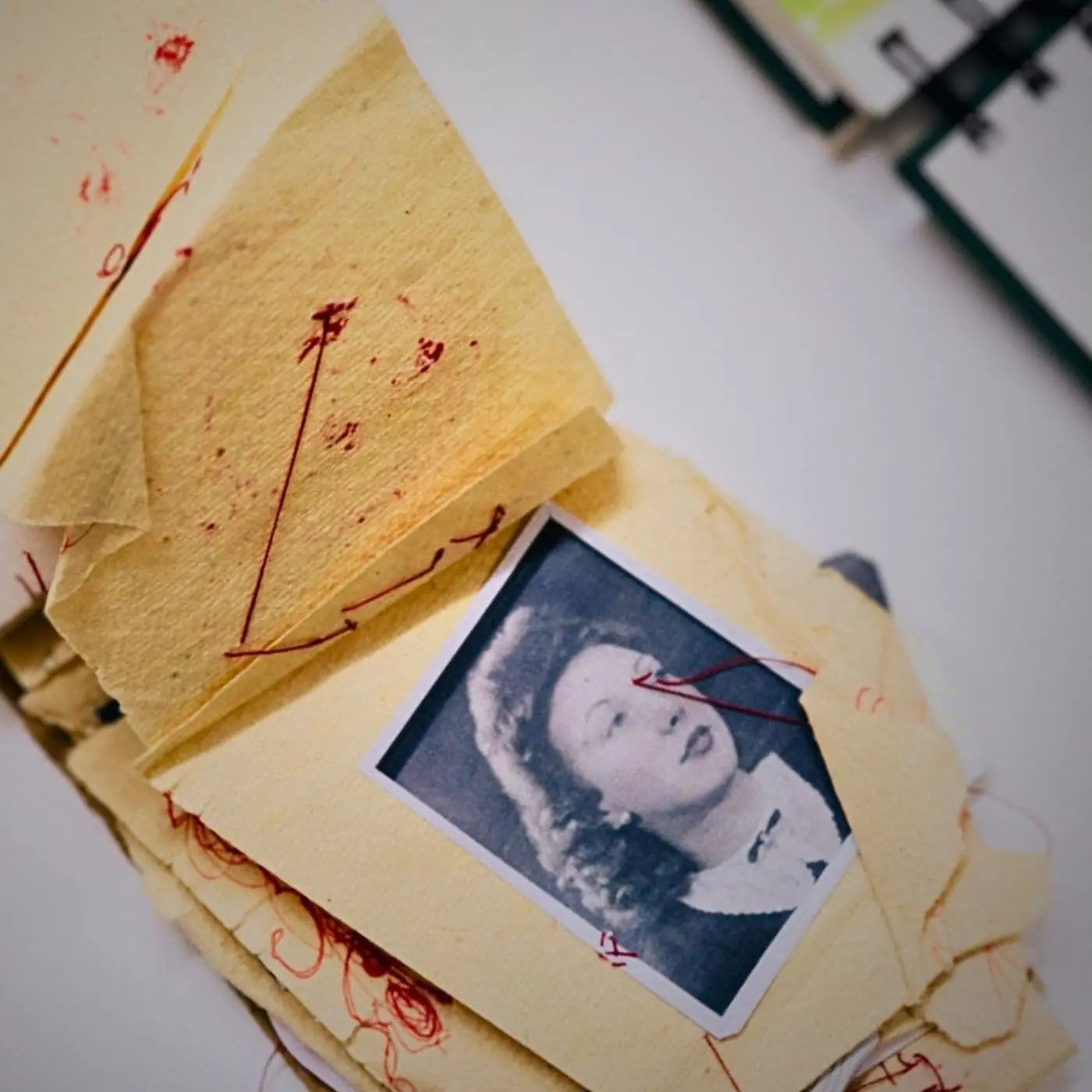

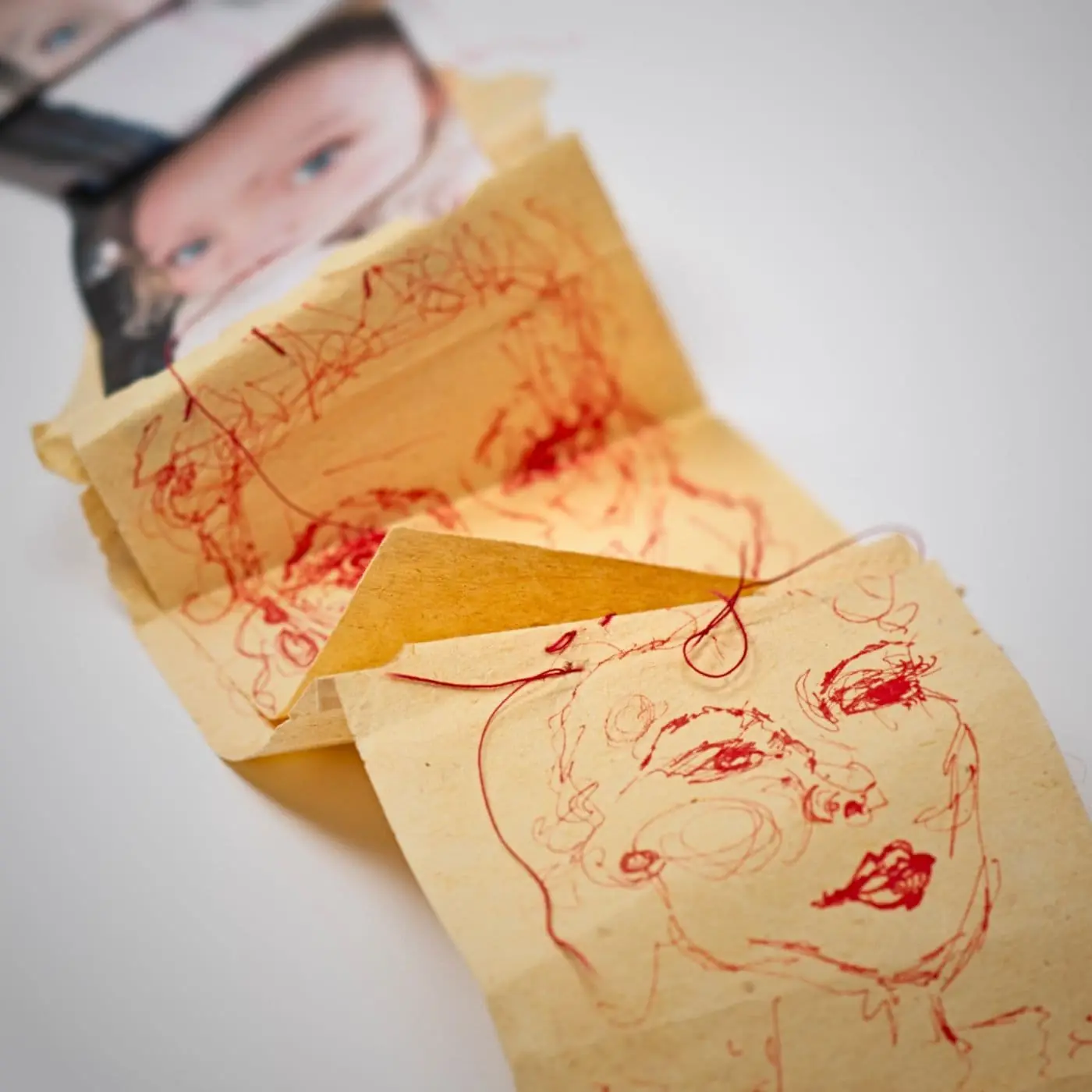

Materials that matter
If I’m making a collage piece, I gather my inspiration and the materials I want to use. I have many large, lidded clear boxes filled with personal memorabilia that I treasure. By using these boxes, it’s easy to see what is inside.
The memorabilia is usually directly connected with the imagery. For example, it may be a scan of a letter from a loved one, or some lace that they’ve given me. I use it all, even receipts from travel experiences or the odd chocolate packet. Thankfully, I have a large studio to house all of this ‘use one day’ fuel.
I’ve always used materials which mattered. I find it hard to function creatively with synthetic fabrics. I love quality, so I’m naturally drawn to cotton, silk and wool. This is easily done in a sustainable way. I collect vintage items that no one else wants.
All the bits I want to use are collected, chopped and stitched on the fabric to form the portrait. However, as I work in a variety of mediums, this is just one way I develop my pieces.
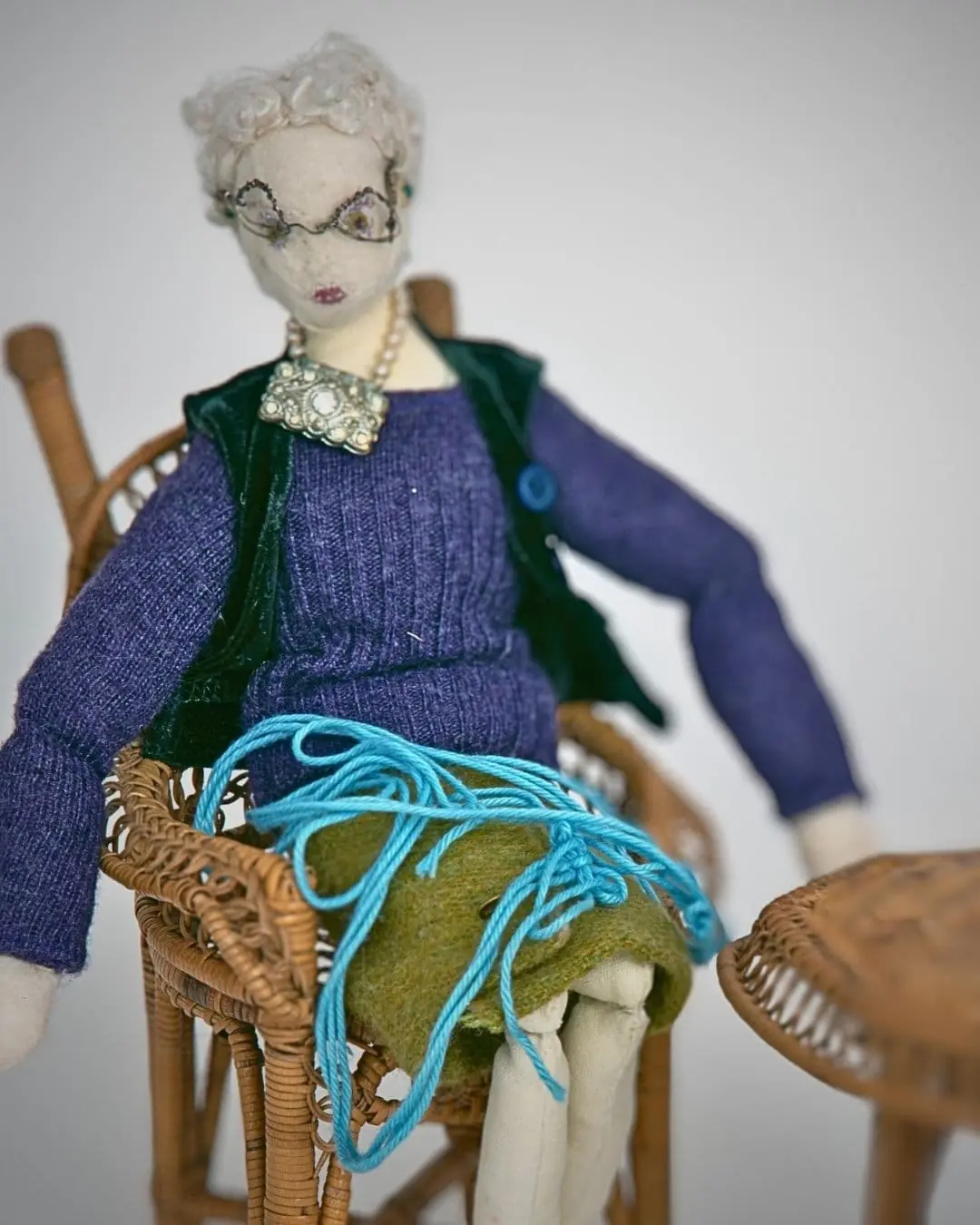

Inspiring Stitch Club
Although I’ve long been known for my stitched collage portraits, creating my Stitch Club workshop, about capturing the essence of a person through stitch, was the start of a shift in direction. I’ve begun to investigate my own ancestry and think about where I fit in this life.
These are big questions when we are talking about an artistic context. I’ve started to present my own background in greater depth and explore how it could be translated to others.
I examine two lines of thought in my Stitch Club project.
One is about looking at a family member whom we might not know well. For example, my dad’s family died before I was born. When I look at my dad’s family photographs, although I know them and feel connected with them, it’s not an emotional connection. This sparked my interest. How can we depict someone we do not know?
Then, I looked at my mother’s mother – I used to stick to her like glue! She died recently, aged 99, so her loss feels very direct. Although in this instance I can create with knowledge, I wanted to challenge myself to think around this. How could I create art by looking at her qualities and the things she owned rather than simply representing her image?
Of course, in the workshop Stitch Club members will dive into their own personal adaptations. Their feedback will add to my own ongoing narrative projects.
“We all can learn and be nourished by each other.”
Ailish Henderson, Art textiles practitioner
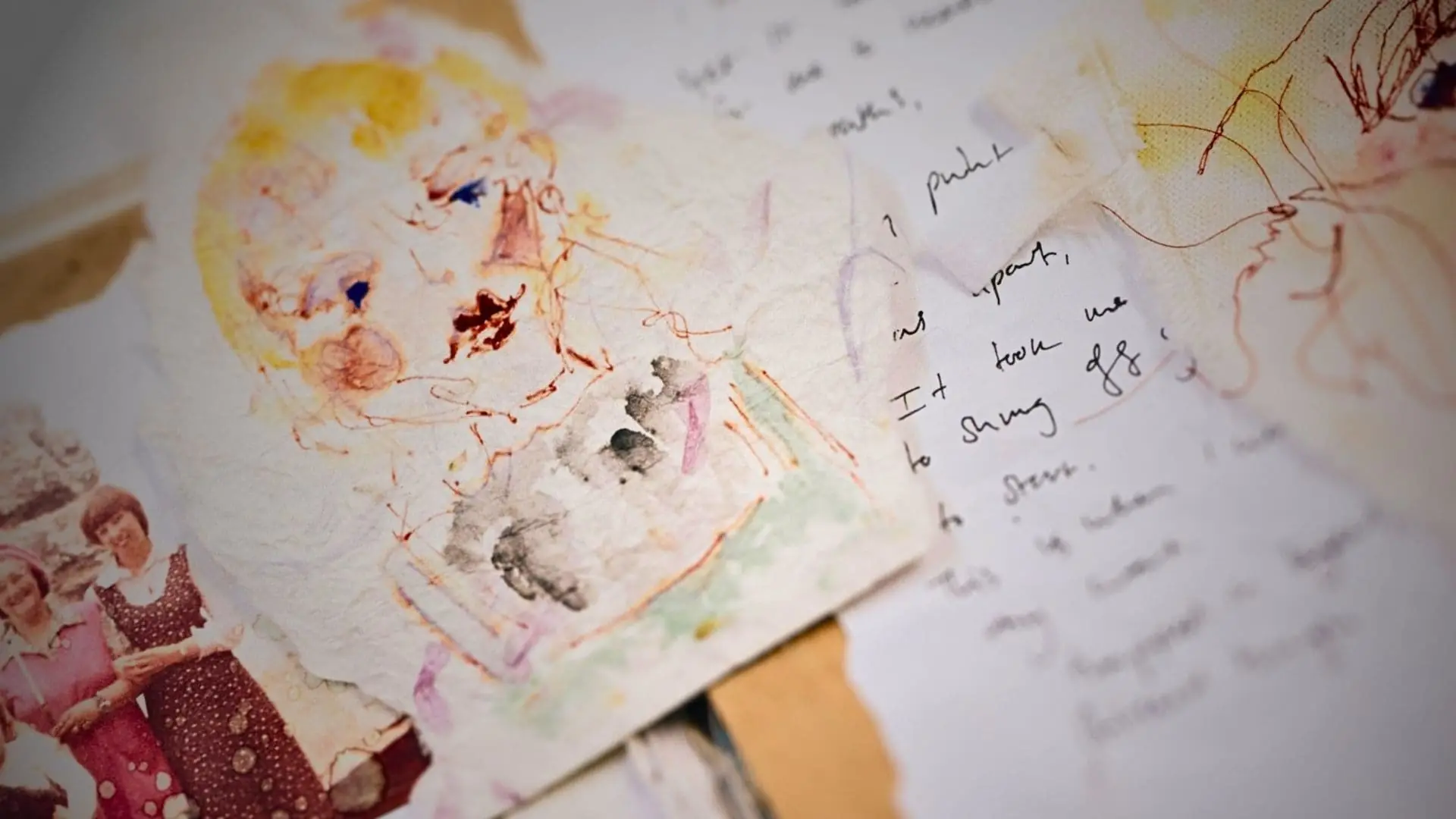

Early inspiration
I was born in Northern Ireland at the height of the Northern Ireland Conflict (the Troubles). We moved back to the UK when I was quite young, so my family could offer full-time support to my mother’s parents. I was home-schooled until I reached sixteen and my focus shifted to the arts.
Art has always been an integral part of my being. I didn’t aspire to become an artist. I just was. There was never that moment some have experienced when they feel they have gone from being an amateur crafter to being an artist.
I was always encouraged to be creative as a child. My Scottish grandmother on my father’s side was a painter, and on my mother’s side there were clear links to dressmaking and textiles.
My mother made her own clothes with Liberty print fabric which has since become the brainchild behind my digitally printed fabric collection called You Gave Me Liberty.
She was forever trying to get a needle in my hand but I was a determined character and avidly rebelled. In fact, I didn’t pick up a needle until I went to college to study fine art.
In my early years, I was definitely inclined toward fine art. Every trip or holiday was filled with sketching time. Over the years, I accumulated a lot of sketchbooks and paintings, which I honestly thought would simply be stored away for sentimental value.
However, I always felt there was something missing. One day a textiles tutor happened to be covering my fine art class. From that moment I was hooked.


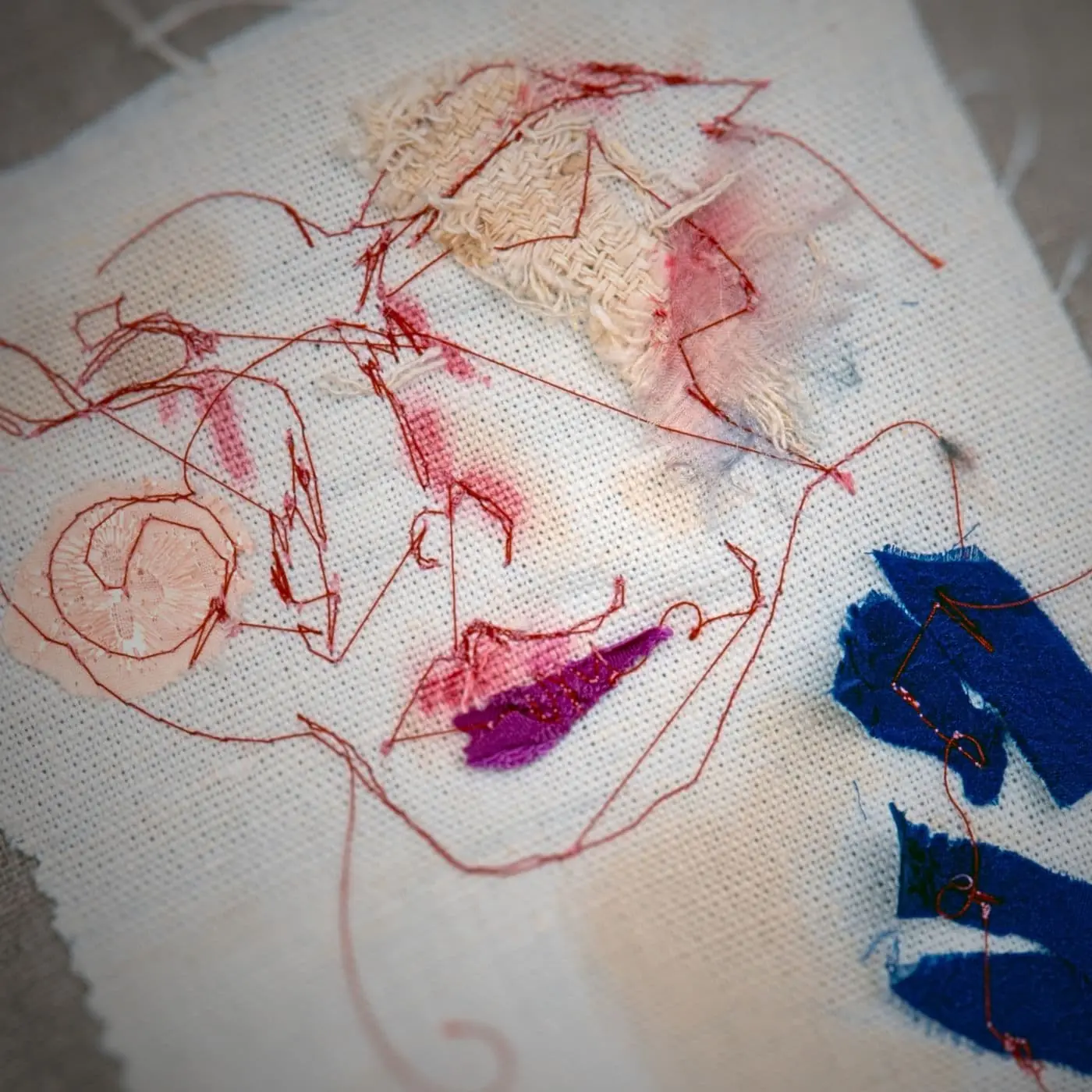

Discovering textiles
I had always thought of textiles as a patience-driven craft. Yet my tutor Julia Triston’s subtle vision sparked something inside of me. She showed me techniques that included fabric but were less taxing on the embroidery side. She revealed what textiles could be, and her patience and insight are something for which I will be ever thankful.
When I discovered textiles in college, I suddenly looked at fine art with new eyes. How could I translate my sketchbook and painting skills into a tactile form? So my textile methods reflect that ‘from-sketch-to-stitch’ concept.
My early practice revolved around utilising techniques with as little stitch precision as possible. I worked intuitively and creatively using my fine art brain. I have to confess I even used a glue gun at times when I didn’t know how to stitch a certain way. As I became more proficient, my work naturally changed.
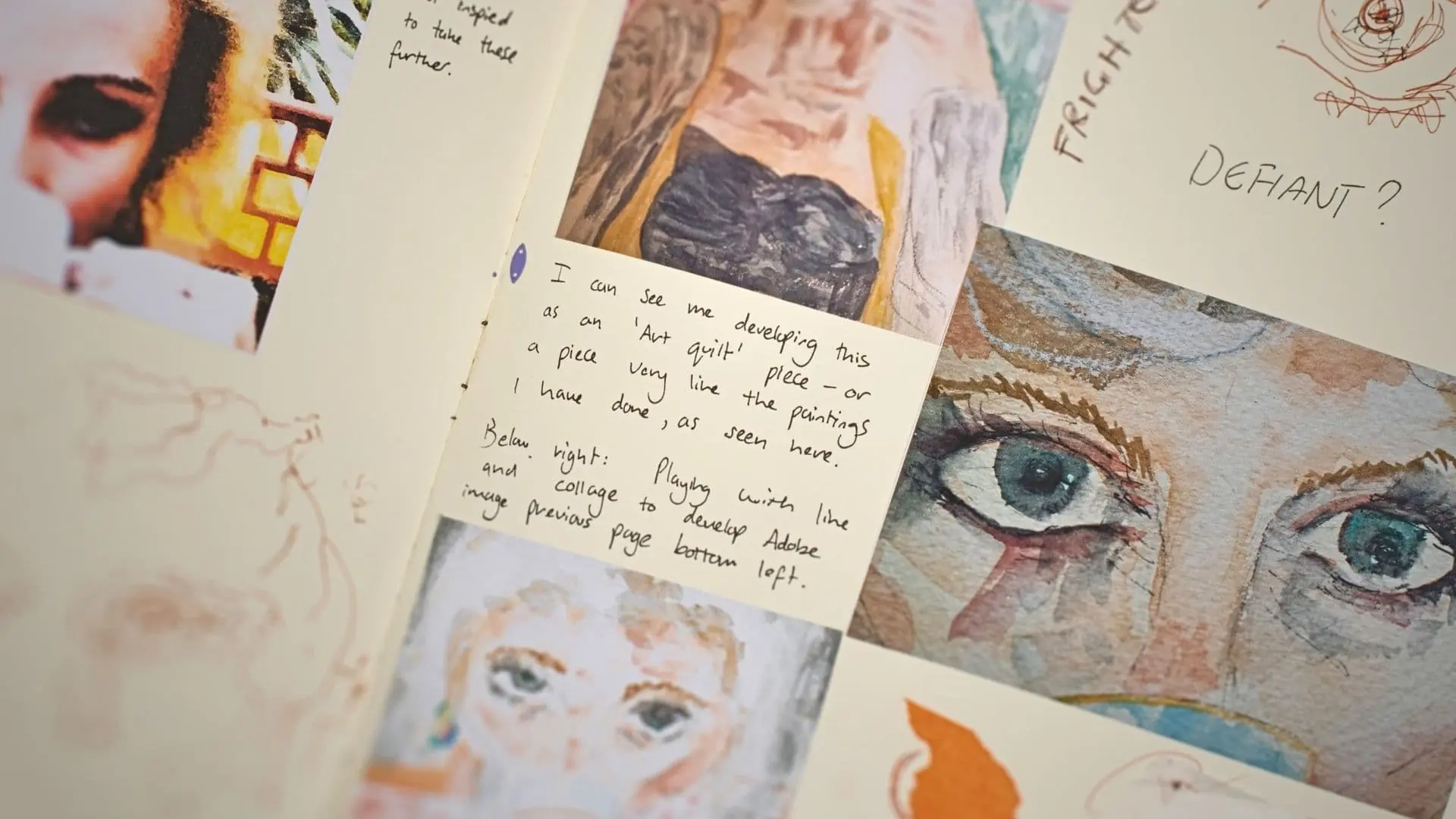

Developing skills
When I left college after first studying fine art and then textiles, I felt lost. I remember panicking. Where would I go from here?
I ended up doing my City & Guilds Level 3 with Julia Triston and Tracy Franklin at their Stitchbusiness classes in Durham, which was a brilliant learning curve. I learned many textile and art-related skills, some of which I now teach.
After this training, I felt stronger and more focused. I knew deep within myself that textile art was something I had to pursue. I just had to make it work.
I began getting myself involved in teaching and lecturing to groups, such as branches of The Embroiderers’ Guild. The Knit and Stitch Show also took me on to provide classes, which opened up my work vision further.
I decided I wanted to continue learning and feeding myself with current and contemporary practices to open up my own practice, so I began studying for a BA in Textiles.
Although I entered university level education later than most, my reputation earned through my own practice and teaching worked in tandem with my course. Teaching and other ways of working can potentially contribute to your creative vision.
“If you are an aspiring textile artist, I’d encourage you to think outside of the normal ‘job’ options.”
Ailish Henderson, Art textiles practitioner
Follow your heart
During my degree studies, I was pushed to take more risks in my artistic practice. However, by the time I began my degree, I already knew who I was as an artist – so I found this mentally taxing.
The work I loved most from my time studying is my stitched collage portrait narrative work. This work got the fewest marks, yet funnily enough it has been my most successful work outside of my degree.
“Be open to change and renewal, but always enjoy what you do – creating should never be a trial.”
Ailish Henderson, Art textiles practitioner
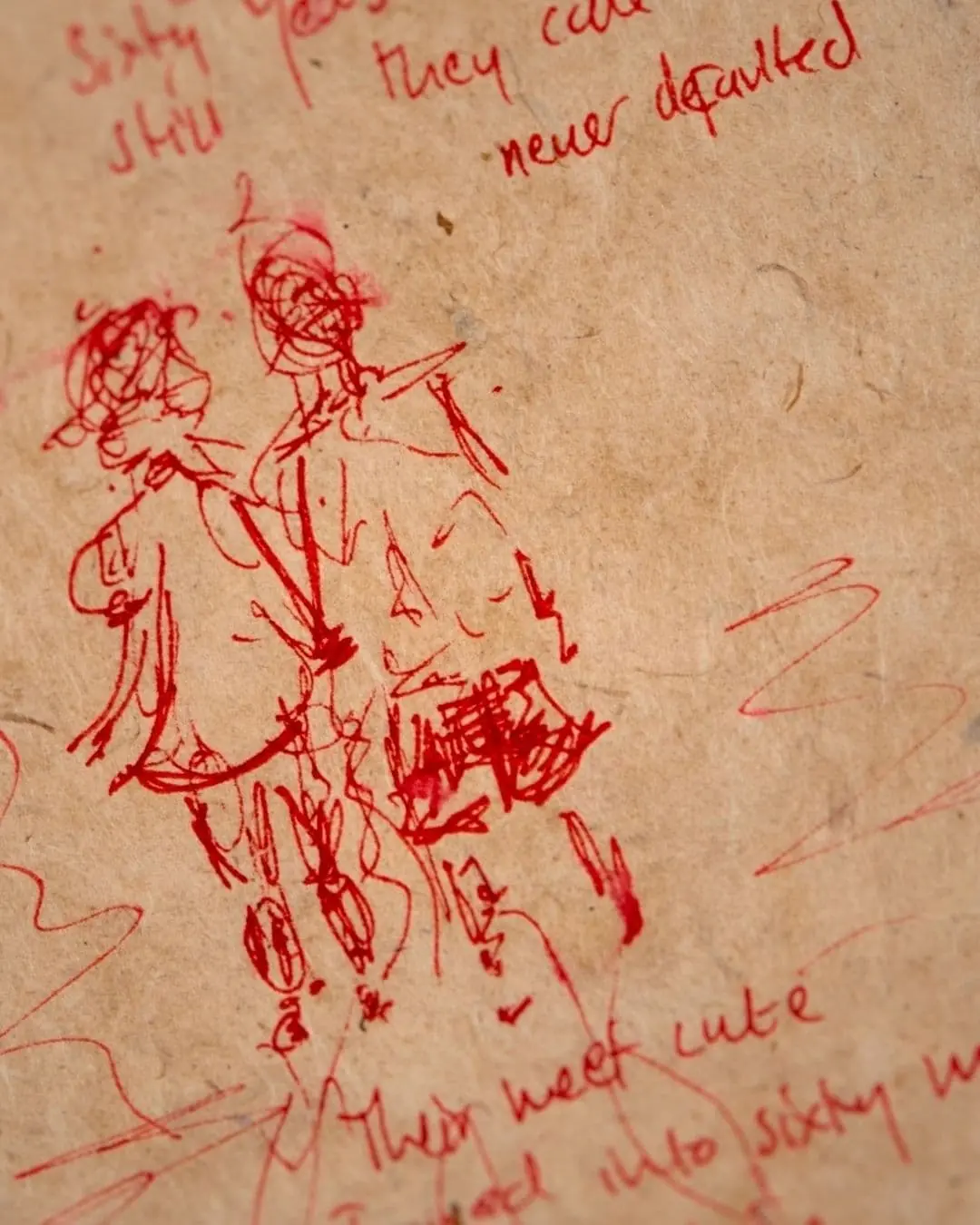

Pass it on
I’d encourage you to always make with your heart. Art without heart lacks magic. Let the inspiration and the creation light you up. If it doesn’t, leave it.
Use materials you have a connection with. For example, memorabilia, letters, photos and passed down textile materials such as lace, old tablecloths or suchlike.
Don’t be afraid to use what’s precious. These treasured things will only die with you, so use it now and give it a new life. You never know, that cherished napkin you kept so carefully in a drawer may end up on a gallery wall someday.
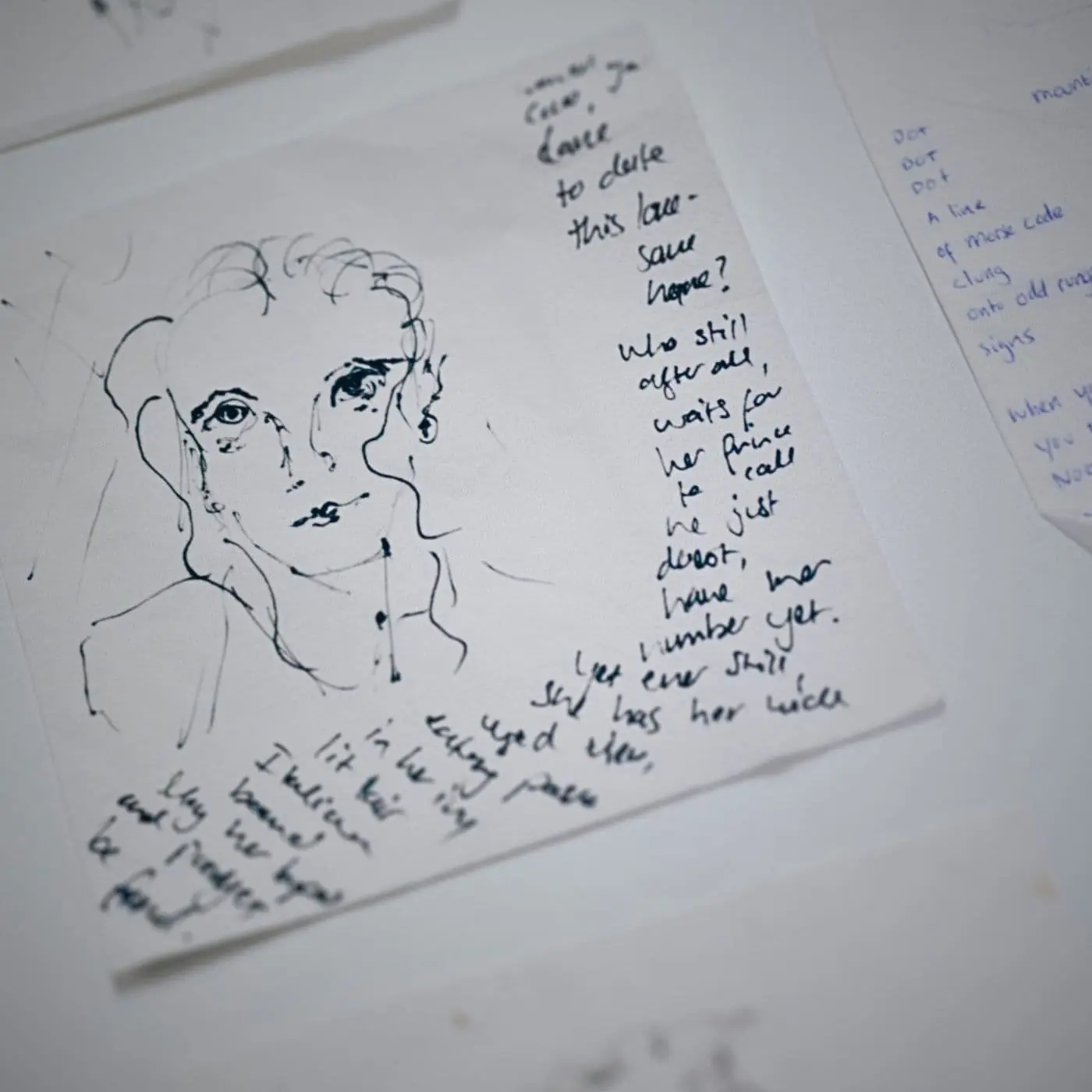

Coming home to myself
For many years, there was a period when I was teaching, writing and, I have to admit it, working off the back of my previous artworks, without feeling any need to make more. I hated this time and I felt as if I’d lost my way.
I came to realise that my art is more than another stitched collage portrait, it is in everything I do.
I am never without a pen or pencil in my hand. I write poems or I sketch odd little things just to make me happy. I write articles about art and I review other people’s art. In other words, I began to realise that I am an artist, I had just missed the point of what the term could be.
The last few years have been filled with exhibitions, losing my cherished grandmother, and all the noise that comes from writing and publishing a book. Currently I am working on some new teaching projects, as well as developing ideas for a second book.
Importantly, I am taking time to contemplate on what my narrative future might be.
